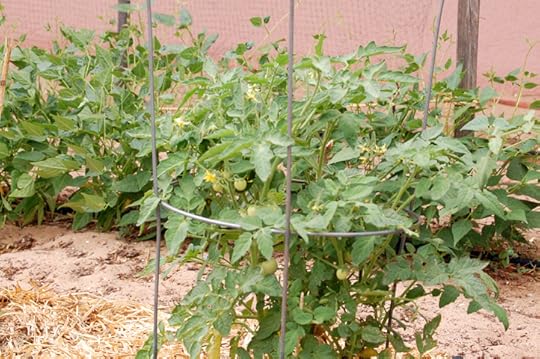Resilience: Not a Metaphor
 Punta Banda Tomatoes and Teppary Beans
Punta Banda Tomatoes and Teppary BeansSo, the cottontail seems to be gone. No idea where or how its departure happened, other than that we did not successfully trap it. Many of the tepary beans that it ate down to the stem are putting out new leaves. There are a few gaps we need to replant.
Something, probably a racoon, raided our tiny pond, but the two fish that survived last summer’s raid managed to survive, probably because I’d pulled out just about anything a racoon could sit on (other than the edge of the pond).
We lost several of our first round of tomato plants to curly top, but many others are doing well. A few are defying the heat (last week we hit 106 multiple times) and setting fruit. We’ve planted sunflowers in the locations where we lost tomatoes to provide shade the remaining plants later this summer. And we’re letting grow a few tomato plants that volunteered where we didn’t plan on having tomatoes.
The zinnias are beginning to flower… We grow most of our garden from seed, because this seems to give the plants a better chance at surviving the trials and travails of the local climate. We also plant a lot of native plants and encourage others.
High winds bent over one of the tomato plants I had put in a container to give a friend and smashed the stem so badly the plant couldn’t survive. The other, right next to it, is somewhat battered but unbowed.
In close to thirty years of gardening in this same yard, I’ve learned to adapt, even as temperatures have gotten more extreme, high winds have extended beyond the “windy season,” and challenges now forgotten have led to changes that are the new normal.
I titled this after I wrote all but this paragraph because it struck me that real life in our garden is a good role model for emotional survival in turbulent times. Sometimes you grow back. Sometimes you make another choice. Sometimes you need to accept that you can’t have what you once did—but that doesn’t mean you need to give up entirely.
Be well…



